
Top Blueberry Varieties You Should Grow
Everyone loves blueberries. I have seven different varieties of blueberry bushes in my backyard. Honestly, they are some of the most demanding plants to care for but definitely worth all the time and effort you put into them.
Background
Where Do Blueberries Come From?
Blueberries are native to North America. They grow wild in Canada and the United States.
Wild blueberries are also known as lowbush blueberries. As the name suggests, they are low to the ground and have relatively small berries. They are most commonly found in Canada and the Northeastern United States.
The taller types of blueberries that are cultivated mainly in the United States are known as highbush blueberries.
Another species of blueberry called rabbiteye is native to the Southeastern United States. These have lower chill requirements but the fruit quality may not be as good.
More recently, hybrids of rabbiteye and highbush blueberries were developed. These are called Southern highbush blueberries and they combine the low chill requirements of rabbiteye blueberry with the better taste of highbush blueberries.
How To Grow Blueberries
Most blueberries require a certain amount of chill hours. This refers to the minimum number of hours between 32 and 45 degrees F in order for them to bear fruit the next season.
In the past, this winter chilling requirement meant that it was impossible to grow quality blueberries in warm climates. However, more recently, the emergence of Southern highbush blueberries with very low chill requirements has allowed states like California to grow blueberries at scale.
Another factor that stands out for blueberries is their soil requirement. Blueberries require highly acidic soil, typically with a pH between 4 and 6. For most of us this means we need to amend the soil we have to make it more acidic or even replace it.
I have used Gary’s Best Acid Mix with great success. It’s expensive but a good way to get your blueberries off to a great start.

I have also used Jobe’s soil acidifier to keep up the acidity of the acid mix and to amend the surrounding soil.

Are Blueberries Nutritious?
Blueberries are known as a superfood. They are rich in fiber, vitamin k, vitamin c, antioxidants, all the while being low in calories.
Popular Varieties of Blueberry
There are numerous varieties of blueberry and their popularity varies depending on regional factors.
Here in California, Southern highbush varieties are most popular.
These blueberry bushes are mostly self-fruitful, though they tend to yield more berries when you plant them alongside different varieties.
Because of the heat waves we experience in California, you should give your blueberry bushes regular watering and use plenty of mulch to retain moisture if you plant them in the ground.
O’Neal Blueberry
O’Neal is one of the most established blueberry varieties you can find in California and has a high heat tolerance.
O’Neal requires a minimum of 6 hours of direct sunlight per day.
It grows up to 5ft tall, is self-fruitful and is considered to be an early season blueberry.
It produces relatively large fruit in late spring.
The chill requirement is only 200 hours.
O’Neal is hardy between USDA zones 5 – 9.
Misty Blueberry
Misty is another early season blueberry that grows big, even taller than O’Neal at over 6 ft.
This cultivar requires a minimum of 6 hours of direct sunlight per day, similar to many other blueberries.
It’s also known to be especially heat tolerant.
Recommended chill for Misty is about 300 hours.
Misty blueberries are hardy between zones 5 – 10.
Misty blooms in late spring and produces fruit in early summer. The berries are mid to large sized and very sweet and tasty.
Sunshine Blue Blueberry
Its official name is Vaccinium x Sunshine Blue.
It requires at least 6 hours of direct sunlight per day.
You should be watering it regularly, at least weekly and preferably more often in extreme heat or if you are keeping it in a container.
Sunshine Blue usually grows 3 – 4 ft tall and wide. It’s for this reason that it’s considered to be semi-dwarf shrub.
It’s hardy between USDA zones 5 – 10 and down to low temperatures of -10 to -20 degrees F.
Requiring only 150 chill hours, it can be described as very low chill.
It’s also said to have better tolerance for somewhat higher pH levels in the soil.
Sunshine Blue blooms in late spring.
Bountiful Blue Blueberry
This blueberry cultivar requires full sun.
Be sure to water it regularly, even more so in extreme heat or if you are growing it in a container.
Bountiful Blue grows at a moderate pace up to 3 – 4 ft tall and wide.
It’s hardy down to USDA zones 6 -10 with an average low temperature of -10 to 0 degrees F.
It requires only 150 to 200 chill hours.
Bountiful Blue starts to bloom in early spring and bears fruit in early summer. It produces pink flowers and large berries.
Southmoon Blueberry
This one is a mid season blueberry and requires about 400 chill hours.
Southmoon can grow 5 to 6 ft tall.
Southmoon is hardy between USDA zones 6 – 9.
It blossoms in the spring and bears large, tasty fruit in the summer.
Pink Icing Blueberry by Bushel and Berry
This one grows 3 to 4 ft tall and is one of the larger blueberry bushes in the Bushel and Berry collection.
Plant it in full sun with at least 6 hours of direct sunlight daily.
It requires 500 chill hours and is hardy between ISDA zones 5 – 10.
Its beautiful appearance is a show stopper. It is named for its beautiful pink foliage in early spring.
This blueberry cultivar blossoms in spring and its fruit is ready to harvest in the summer.
Pink Icing produces tasty, large berries.
Blueberry Buckle Blueberry by Bushel and Berry
Like other blueberry varieties, Blueberry Buckle should be grown in full sun.
This variety is rather compact and grows only 2 to 3 ft tall, which is great for container gardening or if available space is small.
It only needs about 350 chill hours and is hardy between USDA zones 6 – 10.
It blossoms in the spring and produces abundant fruit in the summer. The berries are relatively small compared with other blueberry varieties.
Peach Sorbet Blueberry by Bushel and Berry
This is an acclaimed favorite.
Like many other blueberries, you should grow it in full sun.
It’s a dwarf-sized blueberry bush and grows only 1 1/2 to 2 ft tall. It doesn’t take up a lot of space. It’s perfect for container gardening but can also grow in the ground.
Its water needs are moderate.
Required winter chill is less than 300 hours.
Peach Sorbet is hardy down to USDA zones 5 – 10.
It starts to blossom in spring and bears fruit in the summer. The taste of the berries is very sweet.
Southern Bluebelle Blueberry by Bushel and Berry
This blueberry cultivar is dwarf-sized and reaches only 2 to 3 ft tall.
Be sure to grow it in full sun.
As the name suggests, it is well adapted to warm, southern climates. Southern Bluebelle only requires 250 to 300 chill hours and is hardy between USDA zones 6 – 10.
Southern Bluebelle usually blossoms in early spring and bears fruit in late spring. It produces small to medium sized berries.
Photo Tour of Blueberries in My Backyard
My Sunshine Blue Blueberry


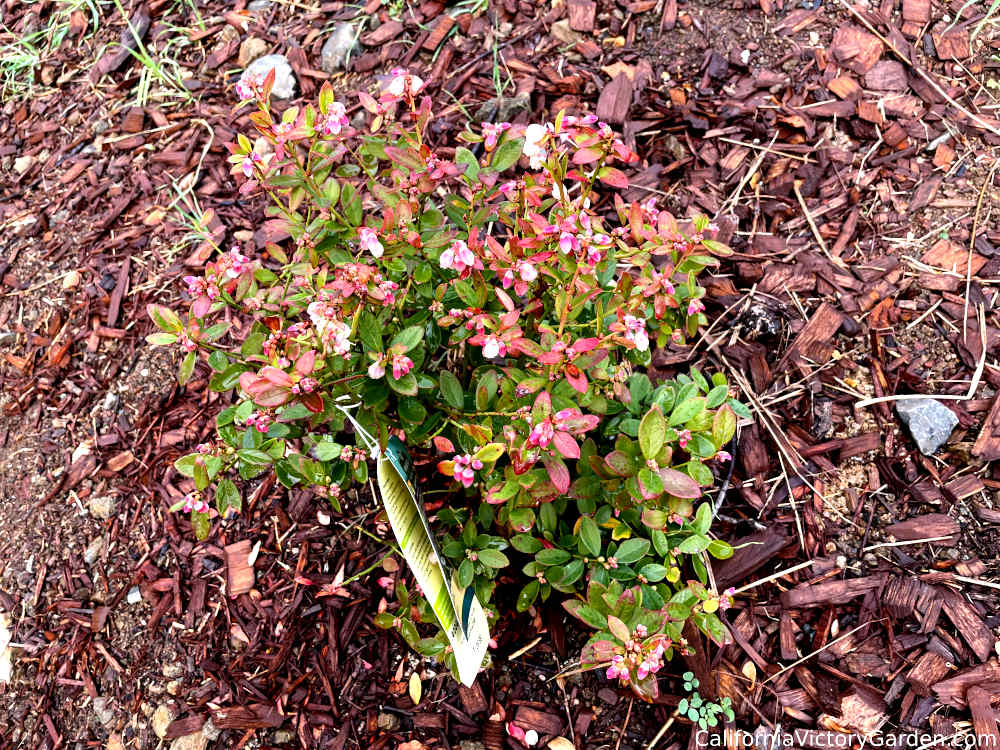

My Bountiful Blue Blueberry
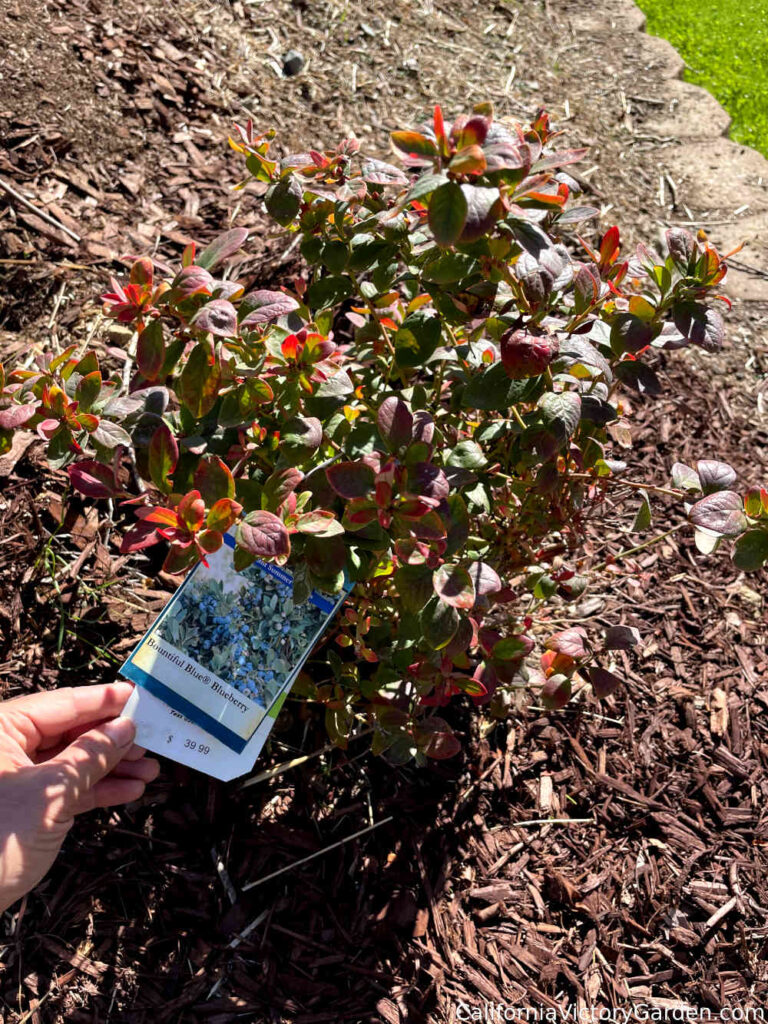




My Misty Blueberry


My Blueberry Buckle by Bushel and Berry
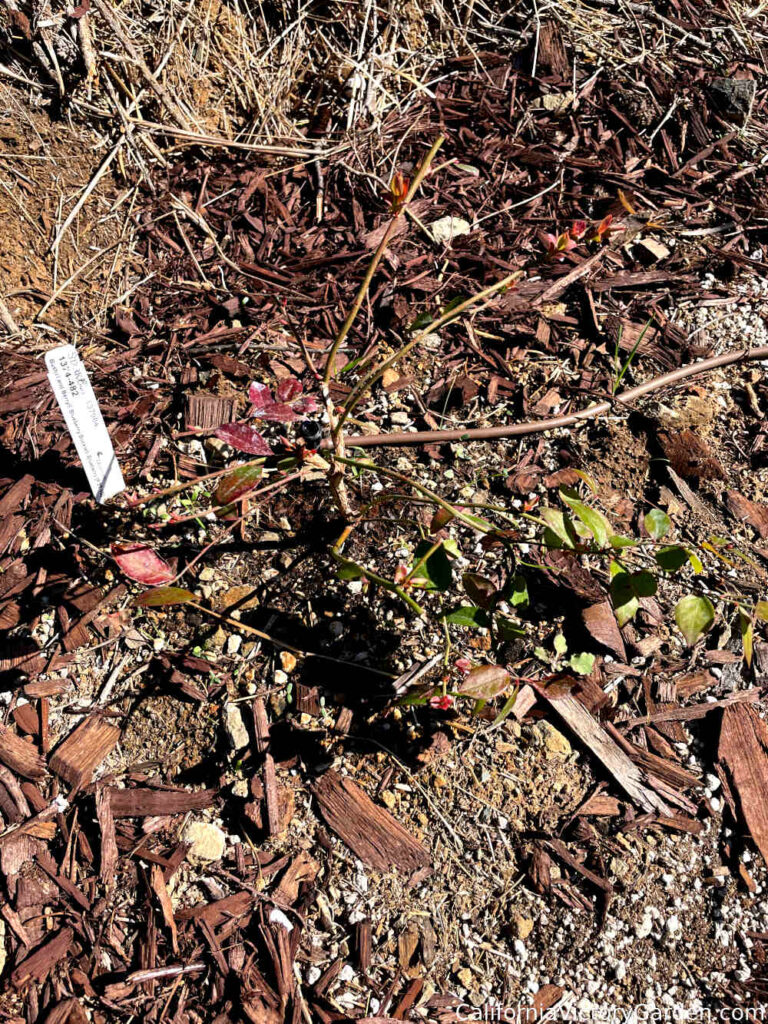
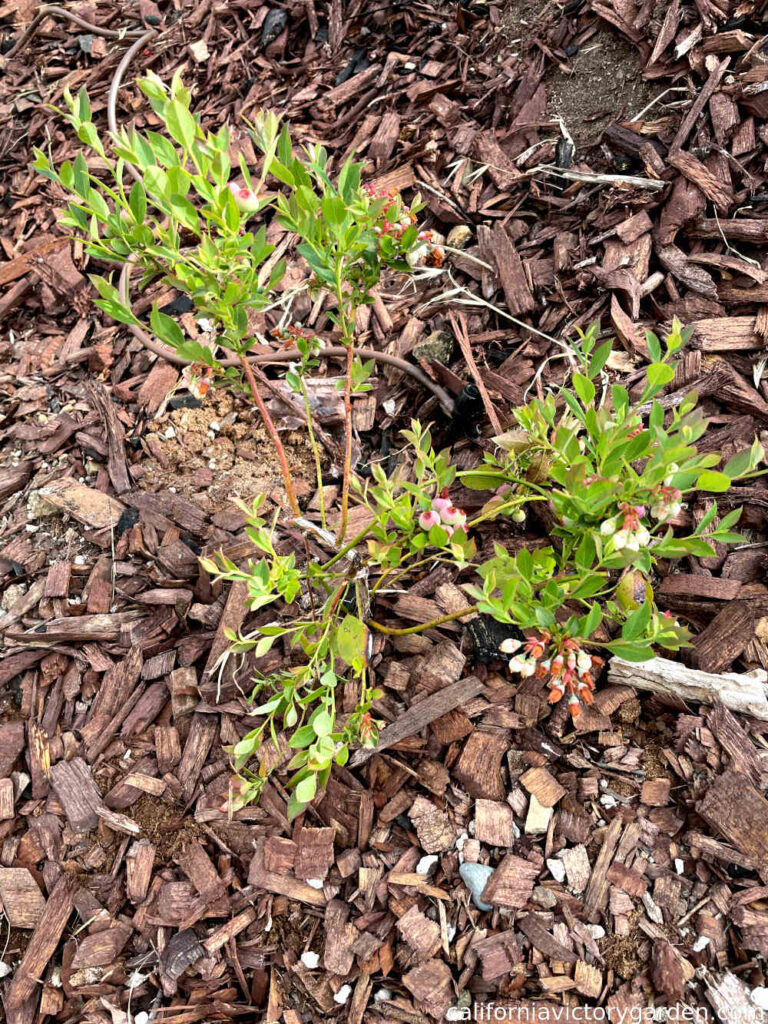
My Southern Bluebelle Blueberry by Bushel and Berry

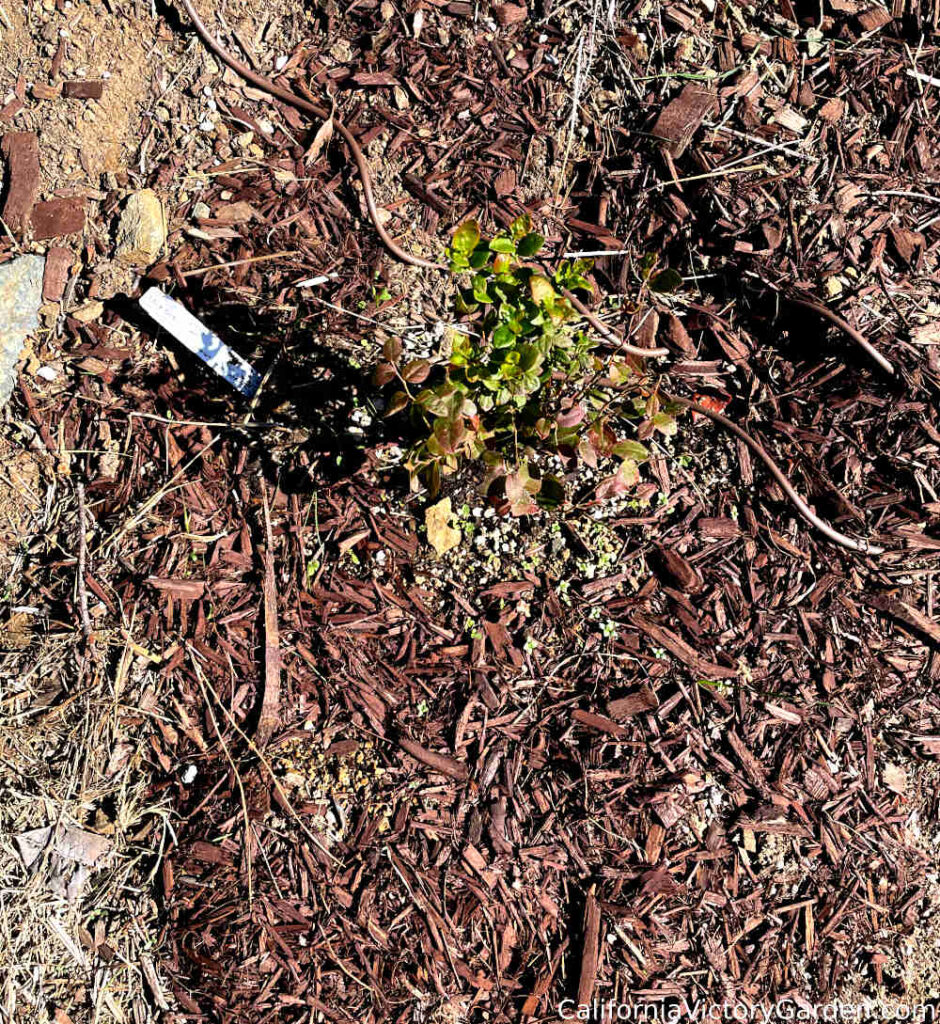
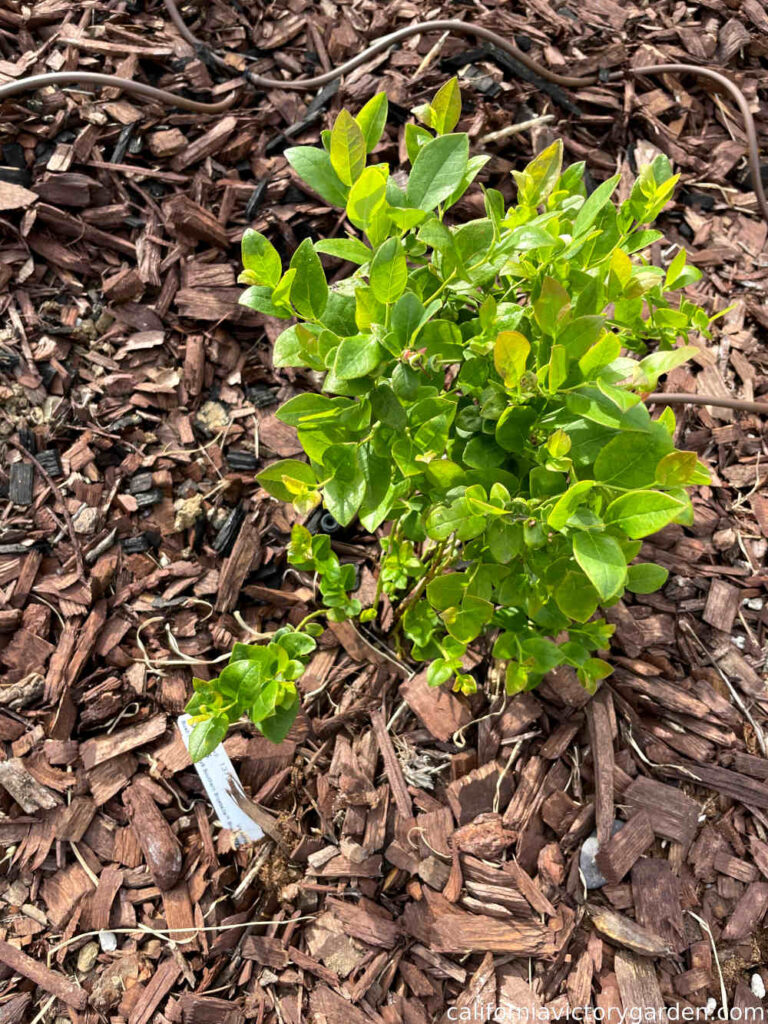
My O’Neal Blueberry


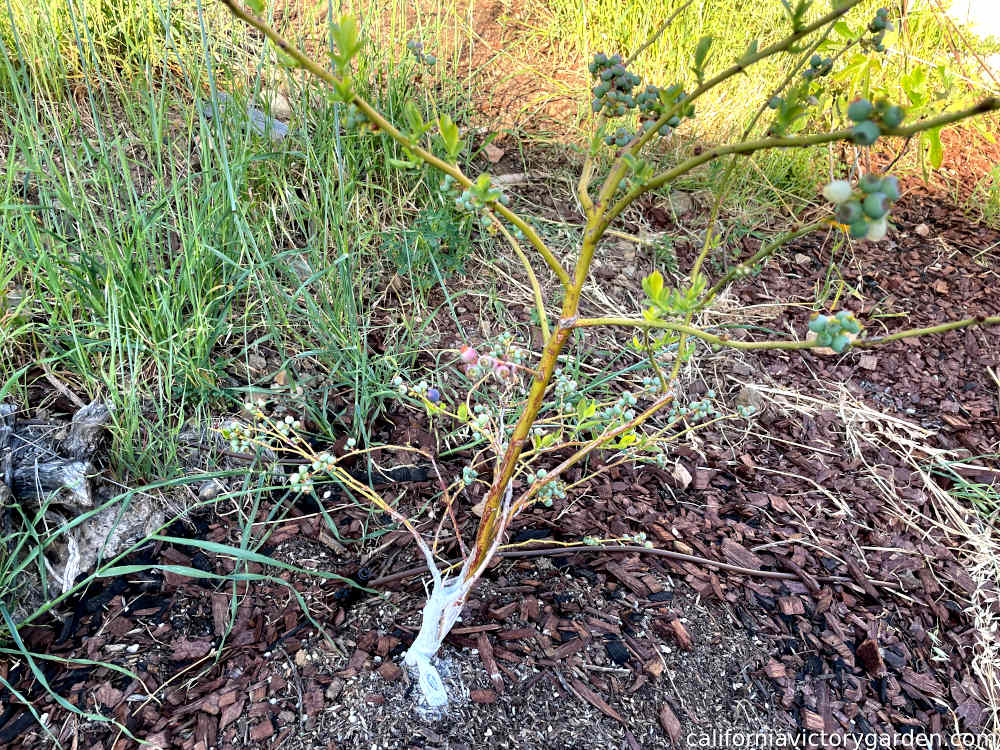

My Peach Sorbet Blueberry by Bushel and Berry



Why You Should Grow Blueberries in Your Backyard
Blueberries, especially some of the newer varieties, take up relatively little space in your backyard. If you plant several varieties, you can extend your harvest throughout the summer. Not to mention they are some of the healthiest fruits you can eat.
Additional Resources
UC Davis Western Institute for Food Safety and Security
https://www.wifss.ucdavis.edu/wp-content/uploads/2016/10/Blueberries_PDF.pdf
